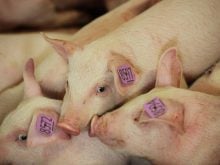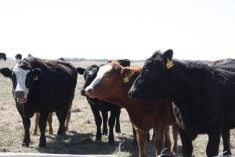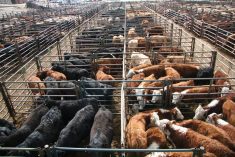America’s country-of-origin labelling law is forging ahead despite mounting opposition from the U.S meat industry and trading partners.
The United States House of Representatives agriculture appropriations committee was scheduled to vote this week on funding to implement the voluntary aspect of the bill. Voting results should be available by August or September on whether money is to be provided for the law written into the 2002 U.S. farm bill.
Even if mandatory implementation is delayed until 2005, the U.S. Department of Agriculture continues to write the regulations under the assumption it is going ahead.
Read Also

Canada told trade crisis solutions in its hands
Canadians and Canadian exporters need to accept that the old rules of trade are over, and open access to the U.S. market may also be over, says the chief financial correspondent for CTV News.
The president of the Texas Cattle Feeders Association explained his concerns with the controversial bill at an international beef congress in Calgary July 11.
Richard McDonald criticized the lack of public consultation and analysis of the implications of country labelling. That includes controversy over individual animal identification, something American producers have resisted.
“The bottom line is, there has to be some kind of system in place in order to track from the time the calf was born in the United States until it gets to the retailer,” said McDonald.
The law, if implemented, requires labels on red meat, vegetables, fruit, peanuts and fish at the retail level but McDonald argues all sectors are responsible for traceback to prove country of origin.
Exporters including Canada and Australia may gain an advantage because their products are labelled.
About half of all beef in the U.S. is purchased from food services outlets that are exempt from labelling. Poultry, small retailers, butcher shops and processed meats are also exempt.
Over 80 percent of all imported beef will be exempt because it goes through food service or further processing.
Canada could develop a niche market for high quality steaks and roasts for American customers looking for an alternative quality product, said McDonald.
David Palmer, representing Meat and Livestock Australia, said the American labelling law could be costly to implement and is subject to challenge before the World Trade Organization.
“It is a thinly veiled attempt to curtail imports,” he said.
Australia questions why the Americans want to implement a $1.9 billion program to label red meat when beef’s real competition is poultry.
The greater concern for Australia and New Zealand is lamb exports that have earned a favoured place among American consumers.
Bilo Wallace, president of the state cattlemen’s association in Chihuahua, Mexico, said the labelling law will have a major impact on live trade with the U.S.
The northern regions of Mexico export large numbers of cattle to the U.S. for feeding and slaughter.
“There is no way we are going to be able to sell those calves. We have to work with people in the United States that are feeding our calves,” he said.
“It will affect us right at the border and will push the prices of calves down.”
He said the Mexicans already know that several large feedlots and one packing plant do not want to continue handling Mexican cattle once the labelling is mandatory. They have started negotiations with a Texas feedlot to supply beef to Mexican-Americans or will ship meat back to Mexico.

















